How non Stick Saucepan Make Cooking Easier and Healthier: Comprehensive Benefits, Tips, and Maintenance Guide
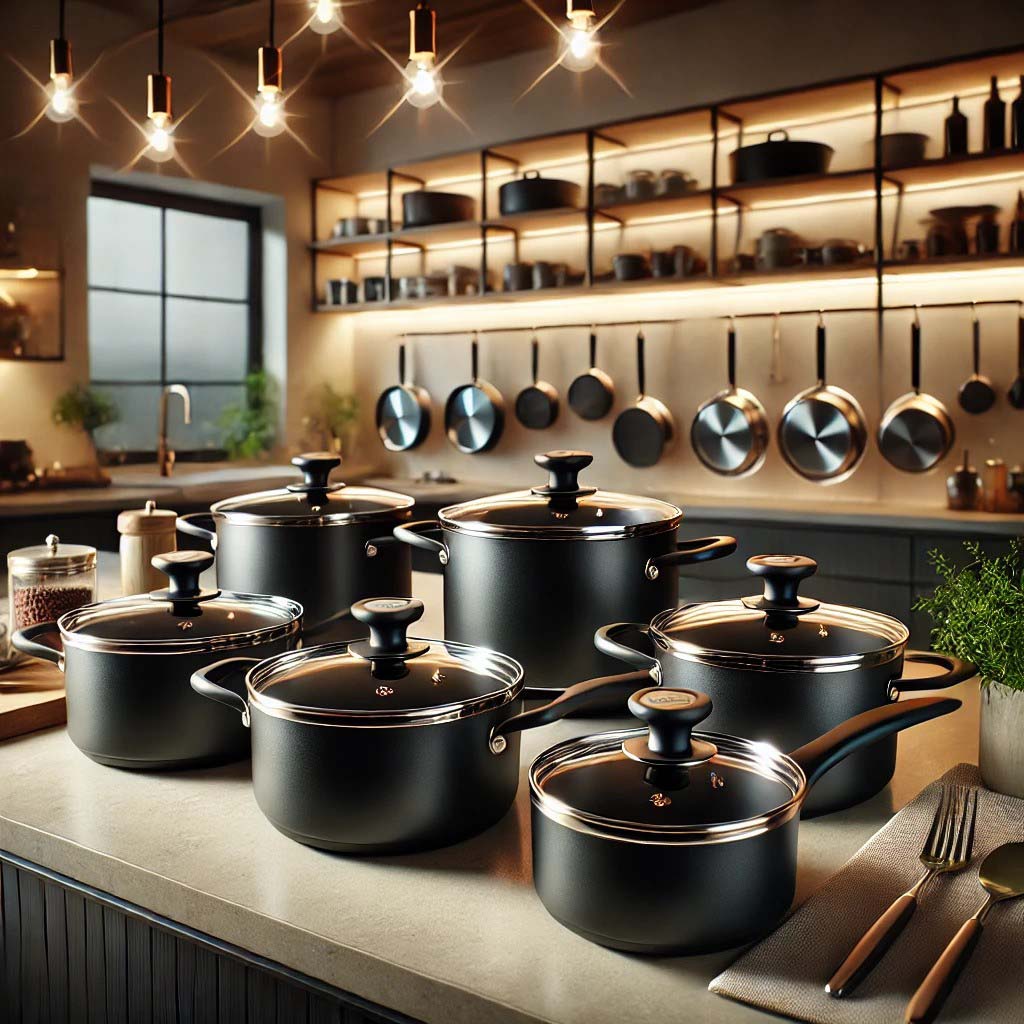
Table of Contents
Introduction
Non Stick Saucepans are an essential tool in every modern kitchen. This versatile cookware can simplify meal preparation, and its unique coating prevents food from sticking, allowing for healthier cooking with less oil and easier maintenance. In this guide, we’ll explore everything you need to know about saucepans, including their various sizes, the benefits of having a lid, and tips for choosing the best one for your kitchen.
Benefits of Using a Non Stick Saucepan
Non stick saucepans provide several advantages that enhance both cooking and cleanup processes. Here are the key benefits:
✨Effortless Cooking: Food slides off easily, reducing the risk of burns or sticking.
✨Healthier Meals: Requires less oil, promoting low-fat cooking.
✨Easy Cleanup: Non-stick surfaces are simple to clean, often requiring just a quick rinse.
✨Durability: High-quality non-stick coatings are long-lasting when properly maintained.
✨Time-Saving: Quick to heat and ideal for fast-paced cooking routines.
Non Stick Saucepans: With Lid vs. Without Lid
When selecting a saucepan non stick, one of the key decisions is whether to opt for a model with a lid or without one. Both types have their unique advantages, depending on your cooking style and preferences. Below, we discuss the benefits of each option, followed by a comparison chart to help you make an informed choice.

Non Stick Saucepans with Lids
A lidded saucepan non stick offers versatility and control in the kitchen. The lid creates a sealed environment, trapping heat and moisture essential for various cooking techniques.
🌟Key Benefits:
Temperature control is more precise, as heat and steam remain contained
Reduces cooking time and energy consumption
Prevents splattering during cooking
Essential for simmering, braising, and steam-cooking
Helps maintain food moisture and flavor
Useful for keeping food warm before serving
📋Considerations:
Slightly higher initial cost
Requires additional storage space
An extra component to clean and maintain
May need periodic lid knob or handle replacement
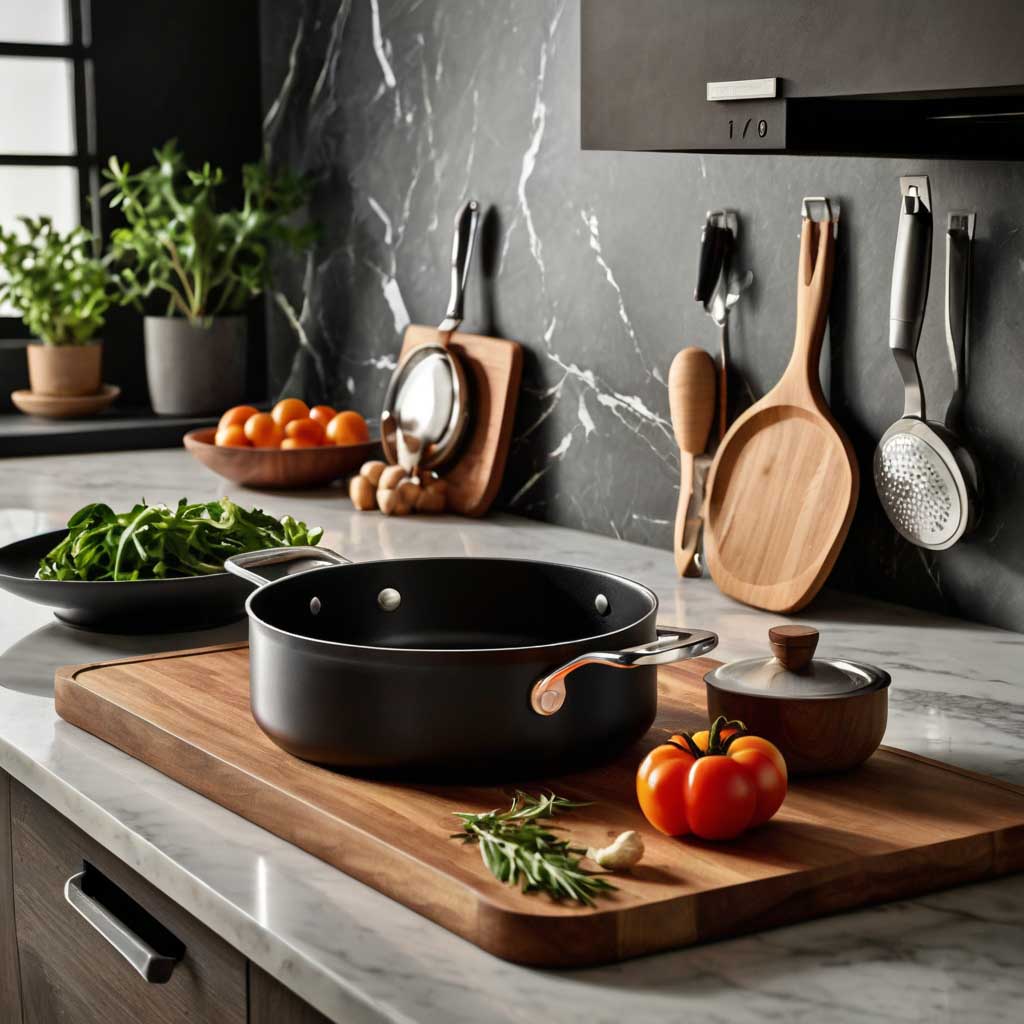
Non-Stick Saucepans without Lids
Lidless best non stick saucepans offer simplicity and accessibility, making them ideal for specific cooking tasks and techniques.
🌟Key Benefits:
More affordable option
Easier to store and stack
Simpler to clean and maintain
Better for reducing sauces and evaporation
Allows constant visual monitoring
Ideal for quick-cooking methods
📋Considerations:
Limited versatility in cooking methods
More energy consumption for certain dishes
Potential for splattering
Not suitable for steam-cooking
Comparison Chart.
| Feature | With Lid | Without Lid |
| Heat Retention | Excellent, retains heat efficiently | Moderate, heat escapes more easily |
| Cooking Time | Faster due to trapped heat and steam | Slower, as heat escapes |
| Energy Efficiency | More energy-efficient due to heat retention | Less energy-efficient, heat escapes faster |
| Versatility | Suitable for various cooking methods | Best for frying and sautéing |
| Monitoring Food | Limited visibility | Easy to monitor |
| Cleaning | Slightly more complex due to lid | Easier to clean as no lid is involved |
| Price | Slightly more complex due to the lid | Generally more affordable |
Making Your Choice
Your decision should be based on your primary cooking needs:
Choose a saucepan with a lid if you:
Cook a wide variety of dishes
Frequently prepare rice, grains, or steamed vegetables
Value versatility in cooking methods
Need better temperature and moisture control
Choose a saucepan without a lid if you:
Primarily make sauces and reductions
Have limited storage space
Prefer constant visual access to food
Cook mostly quick-preparation dishes
Are you working with a tighter budget
Both types of saucepan non stick have their own merits. The best choice depends on your cooking style and the kinds of dishes you prepare most often. If you prioritize efficiency, moisture retention, and less mess, a saucepan with a lid is ideal. However, if you prefer more control over your cooking and often prepare dishes that require crisping or evaporating liquids, a lidless saucepan may be a better option.
Overview of Non-Stick Saucepan Sizes
saucepan non stickcome in a variety of sizes, each catering to different cooking needs. Whether you’re preparing a small sauce or a larger meal, selecting the right size can enhance your cooking experience. From a 1 quart non stick saucepan for single servings to a 4 quart non stick saucepan with lid for family-sized meals, understanding the distinctions between sizes is essential. In this article, we will explore the benefits and uses of 1 quart, 2 quart, 3 quart, and 4 quart non-stick saucepans, including models with and without lids.
Size Range at a Glance
❇️ 1 Quart Non Stick Saucepan
❇️ 2 Quart Non Stick Saucepan
❇️ 3 Quart Non Stick Saucepan
❇️ 4 Quart Non Stick Saucepan

Detailed Size Analysis
1 Quart Non-Stick Saucepan
The 1 quart saucepan non stick is ideal for small, quick cooking tasks. Perfect for making single servings of sauces, gravies, or reheating small portions of soup. If you prefer a saucepan with added convenience, a 1 qt non stick saucepan with lid helps retain moisture and reduces splattering, making it easier to simmer or heat liquids without the mess. This size is also great for cooking delicate items like eggs or melting butter, where precise control of heat is essential.
2 Quart Non-Stick Saucepan
The non stick 2 qt saucepan is a versatile option that bridges the gap between the smaller 1 quart and larger 3 quart sizes. It’s perfect for preparing side dishes like rice, vegetables, or small batches of sauces. Whether you’re boiling pasta, cooking grains, or making a creamy risotto, a 2 quart saucepan provides enough room for moderate cooking without taking up too much space in the kitchen. This size also works well for preparing soups or stews for one or two people, making it an essential piece for smaller kitchens.
3 quart non stick saucepan
A 3 quart non-stick saucepan is an excellent choice for those who need a slightly larger capacity for everyday cooking. It’s ideal for preparing meals for a small family or cooking larger batches of sauces, soups, or pasta. A 3 qt saucepan non stick offers versatility, allowing for simmering, boiling, and even shallow frying. For added convenience, a 3 quart saucepan non stick with a lid can help retain heat and moisture while cooking, reducing the time and energy required to prepare your dishes.
4 Quart Non-Stick Saucepan
The 4 quart saucepan is a perfect size for preparing larger quantities of food, such as soups, stews, or one-pot meals. This size allows for more room to work with, making it ideal for dishes that require ample space for stirring or simmering. Whether you are cooking for a family or preparing meals in bulk, a 4 qt saucepan provides ample space without being too large. Additionally, a 4 qt non stick saucepan with a lid enhances heat retention and reduces mess, making it easier to cook hearty dishes without worrying about spills or heat loss.
For those who need a larger capacity and more functionality, the 4-quart saucepan with a lid is perfect for slow-cooking and simmering larger batches of food. It provides all the benefits of non-stick cooking with the added advantage of moisture retention and faster cooking times due to the lid.
Choosing the right size saucepan non stick depends largely on your cooking needs. A 1 quart non stick saucepan is great for small portions or delicate tasks, while a 2 quart saucepan provides versatility for side dishes or small meals. The 3 quart non-stick saucepan offers the perfect balance for everyday use, and the 4 quart non-stick saucepan is ideal for preparing larger meals. Whether with or without a lid, each size offers distinct advantages, making it essential to select the one that best suits your cooking style.
| Feature | 1 Quart Non-Stick Saucepan | 2 Quart Non-Stick Saucepan | 3 Quart Non-Stick Saucepan | 4 Quart Non-Stick Saucepan |
| Capacity | 1 quart | 2 quarts | 3 quarts | 4 quarts |
| Ideal For | Compact, easy to store, with or without a lid | Melting butter, heating milk, and cooking eggs | Large batches of soup, stews, pasta, and one-pot meals | Large batches of soup, stews, pasta, one-pot meals |
| Common Uses | Side dishes, small batches of sauces, and vegetables | Everyday cooking, boiling, simmering, and sauces | Large meals, cooking for a family, and slow-cooking | Large meals, cooking for a family, slow-cooking |
| Convenience Features | Larger size requires more storage space | Versatile for small or medium portions | Great for larger meals or cooking for a few people | Ideal for large meals and family-sized portions |
| Size & Weight | Compact and lightweight, easy to handle | Slightly larger, but still manageable | Balanced size, easy to maneuver | Larger size, requires more storage space |
| Price Range | Most affordable | Moderately priced | Moderately priced | Most expensive due to size and added features |
| Cooking Speed | Fast (small quantities) | Moderate (medium quantities) | Moderate to fast (large batches or family-sized) | Moderate to slow (large quantities) |
| Best for | 1 qt non-stick saucepan: Single servings, delicate cooking, small amounts of liquid | Non-stick 2 qt saucepan: Perfect for small to medium portion sizes, side dishes, and rice. | Soups, stews, sauces, and small family meals | 4 qt non stick saucepan: Great for family meals, large batches, and cooking for a group. |
Each size of non-stick saucepan brings a unique set of benefits to suit different cooking needs, from small single-serving tasks to large family meals. The availability of lids further enhances versatility, especially for dishes requiring heat retention or simmering.
Choosing the Best Non Stick Saucepan
Choosing the best non-stick saucepan is essential for achieving efficient cooking and hassle-free cleanup in the kitchen. When selecting a saucepan non stick, prioritize features like durability, heat distribution, and safety. Opt for pans made with high-quality materials such as hard-anodized aluminum or stainless steel with a PFOA-free non-stick coating to ensure both performance and health safety.
Look for ergonomic handles that stay cool during cooking and lids that seal tightly to retain heat and moisture. Compatibility with various stovetops, including induction, is an added advantage for versatility. Proper care, such as using silicone or wooden utensils and avoiding high heat, can extend the lifespan of your saucepan. Investing in a reliable non-stick saucepan enhances your cooking experience, making it easier to prepare delicate sauces, soups, and other dishes with precision and ease.
When selecting a saucepan, consider these factors:
Material: Opt for durable materials like anodized aluminum or stainless steel.
Compatibility: Ensure it’s compatible with your stove type
Size: Match the saucepan size to your cooking needs.
Lid Options: Decide whether a lid is necessary for your recipes.
Brand Reputation: Choose trusted brands for quality assurance.
How to Clean a Saucepan?
Cleaning a non-stick saucepan non stick properly is crucial for maintaining its performance and extending its lifespan. Always allow the pan to cool completely before washing to prevent warping. Use warm water, a mild dish soap, and a soft sponge or cloth to gently clean the surface. Avoid abrasive scrubbers, steel wool, or harsh cleaning agents, as these can damage the non-stick coating. For stubborn residue, soak the pan in warm, soapy water for a few minutes before wiping it clean. Regularly inspect the pan for scratches or signs of wear, and replace it if the coating begins to peel or flake. Proper cleaning not only preserves the non-stick surface but also ensures safe and efficient cooking for years to come.
Consider These Factors to Clean
Cool Before Cleaning: Let the pan cool completely to avoid warping.
Use Gentle Tools: Clean with warm water, mild dish soap, and a soft sponge or cloth.
Avoid Abrasives: Do not use steel wool, harsh cleaners, or abrasive scrubbers.
Soak Stubborn Residue: Soak in warm, soapy water for a few minutes before wiping clean.
Inspect Regularly: Check for scratches or peeling, and replace if the coating is damaged.
Maintenance Tips for Non Stick Saucepans
Nonstick saucepans are a convenient and popular choice for cooking, but they require special care to maintain their nonstick coating and ensure they last. Here are some simple tips to help you keep your nonstick saucepans in good condition:
Handwash only: Avoid using harsh detergents or abrasive scrubbers, which can damage the nonstick coating. Instead, gently handwash with mild dish soap and a soft sponge or cloth.
Use the right utensils: Opt for non-metal utensils like silicone, nylon, or wooden spatulas to avoid scratching the surface.
Avoid high heat: Overheating can damage the nonstick coating and release harmful fumes. Use medium heat settings whenever possible.
Don’t leave empty pans on the stove: This can cause the nonstick coating to deteriorate prematurely.
Clean immediately after use: Soaking food residue can make it harder to clean and may damage the coating.
Store properly: Stack your nonstick pans carefully to avoid scratching or chipping the surface.
Check for signs of wear: If your nonstick pan is showing signs of wear, such as scratches or peeling, it’s time to replace it to prevent potential health risks.
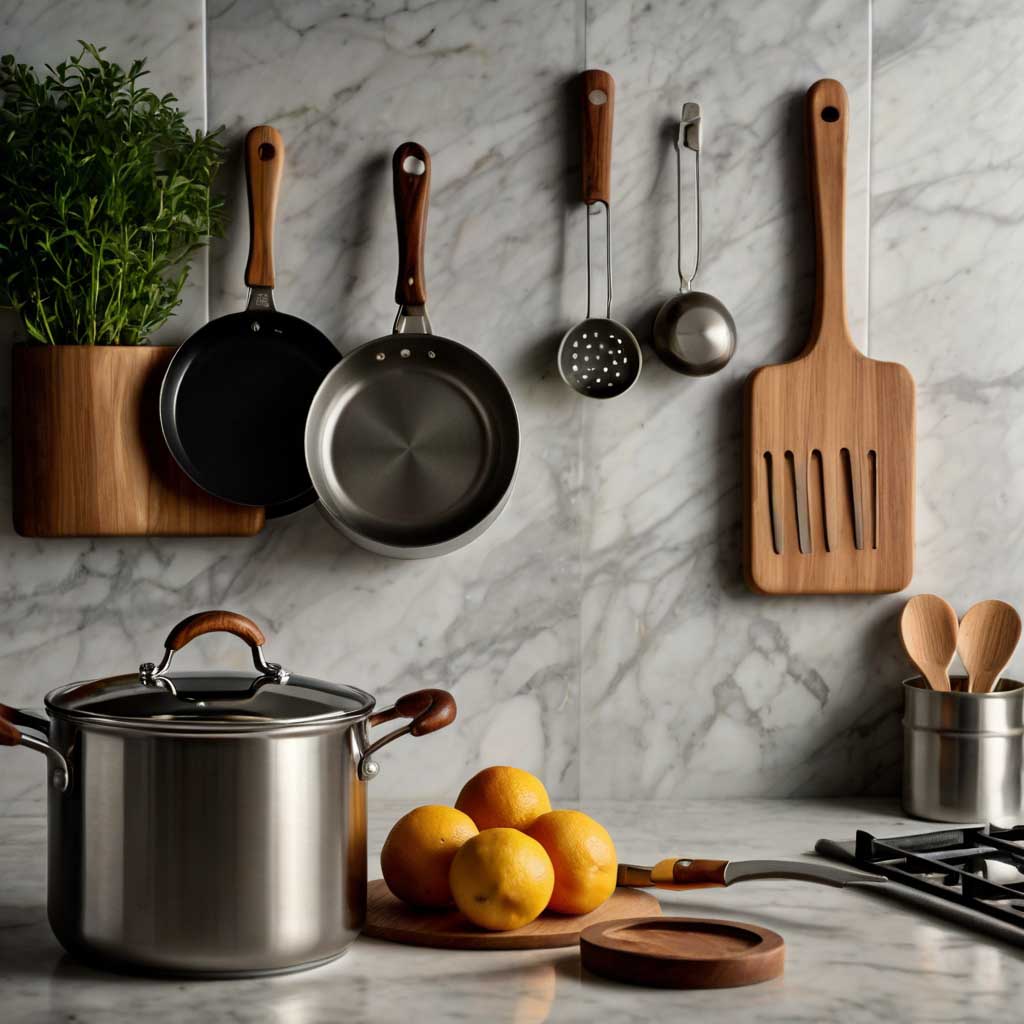
Conclusion
Choosing the best non stick saucepan is a worthwhile investment for any kitchen. With the right saucepan, cooking becomes more enjoyable and less of a chore. From 1 quart to 4 quart sizes, each offers unique benefits catering to different cooking needs. Whether you prefer a saucepan with a lid for controlled cooking or without a lid for faster evaporation, there’s a perfect option for you.
Remember to consider factors like material, size, handle comfort, and maintenance tips when making your selection. By doing so, you’ll ensure that your non-stick saucepan remains a trusty companion in your culinary adventures for years to come.
Happy cooking, and may your meals always turn out deliciously perfect!
FAQ
Q1. What is the meaning of a non stick saucepan?
A saucepan is a cooking pot coated with a material like Teflon to prevent food from sticking to its surface. This makes cooking and cleaning easier.
Q2. What is the difference between a saucepan and a frying pan?
A saucepan is deeper with tall, straight sides, ideal for boiling, simmering, or making sauces. A frying pan is shallower with a wide, flat base, designed for frying and searing foods.
Q3. Is stainless steel a non-stick pan?
No, stainless steel pans are not naturally non-stick unless specially treated or coated. They require oil or butter to reduce sticking.
Q4. How do you identify a saucepan?
A saucepan has a flat bottom, tall straight or slightly flared sides, and a long handle, often with a lid.
Q5. Why is it called a saucepan?
The name originates from its primary use for making sauces, but it is versatile and used for various cooking methods.
Q6. Is non-stick cookware safe?
Non-stick cookware is generally safe when used properly. Avoid overheating or scratching the coating, as it may release harmful substances.
Q7. How long do saucepans last?
Non-stick saucepans typically last 3–5 years, depending on usage and care.
Q8. Can I use a saucepan for frying?
Yes, you can fry in a saucepan, but it may not offer the same convenience as a frying pan due to its depth.
Q9. What is the safest type of saucepan?
Stainless steel and ceramic-coated pans are considered among the safest options for cookware, as they do not leach harmful substances into food.

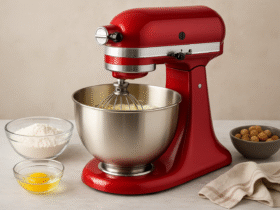
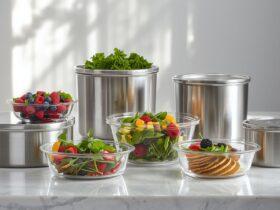
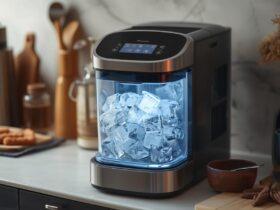



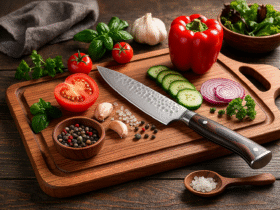

Leave a Reply